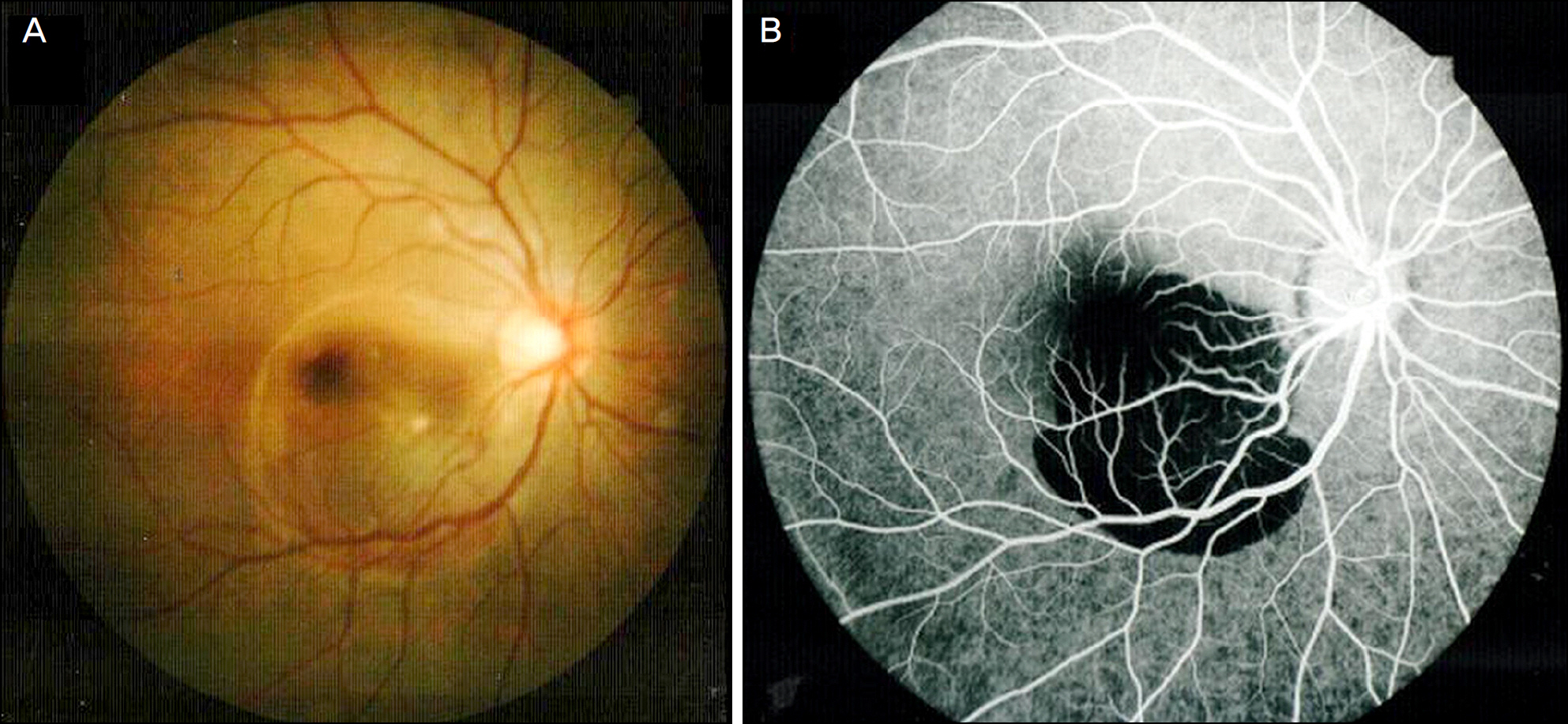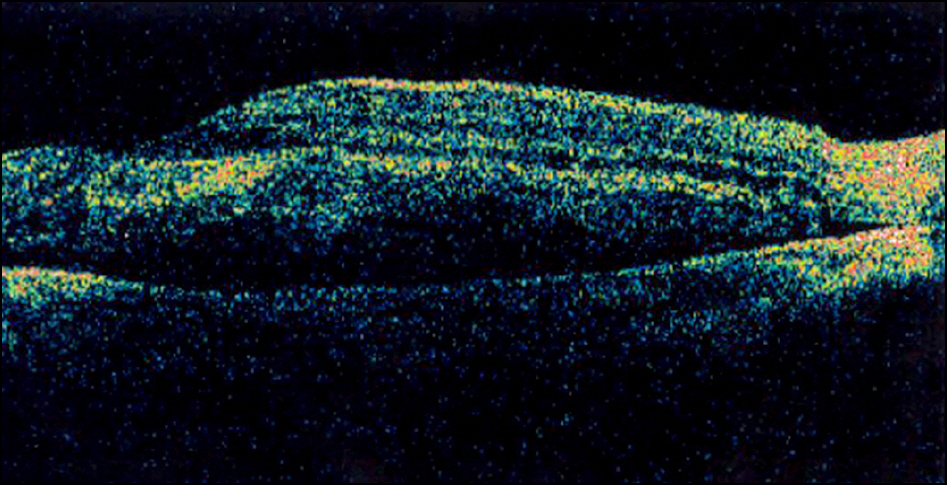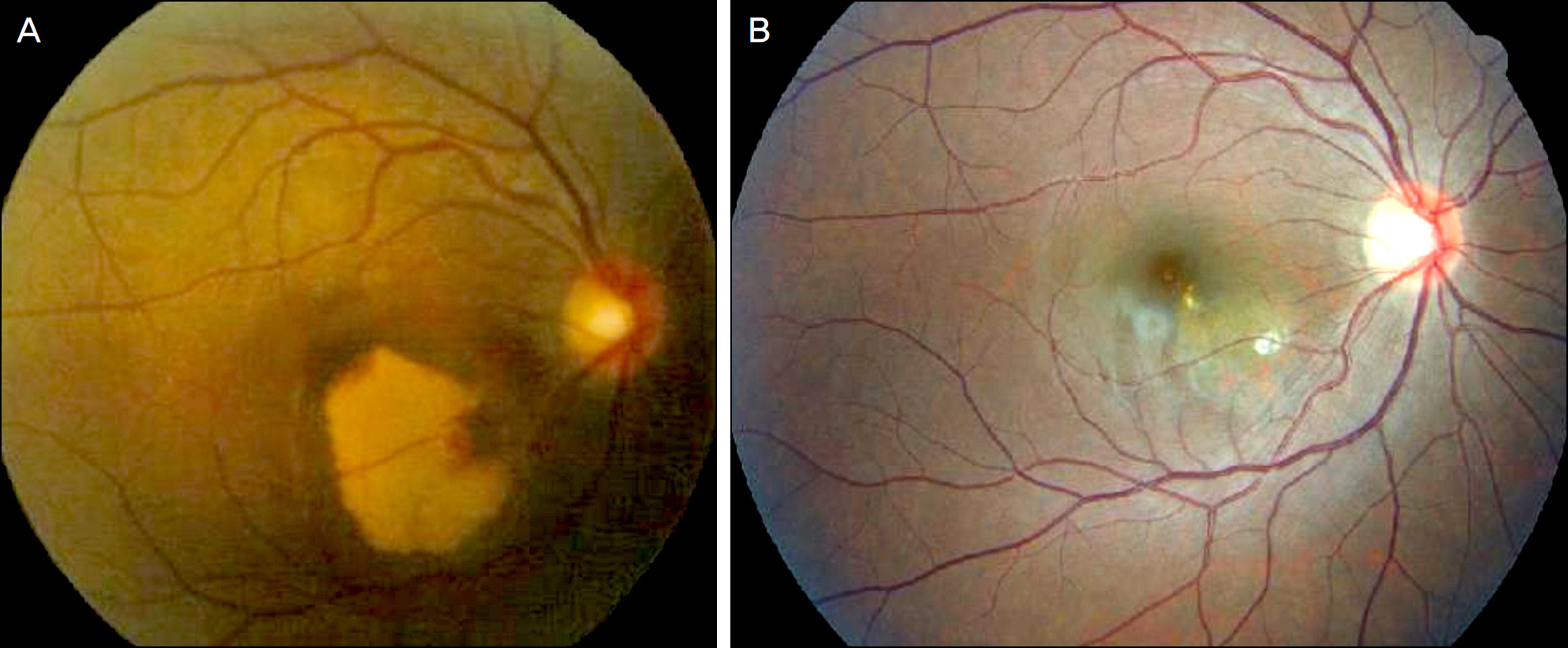J Korean Ophthalmol Soc.
2011 Nov;52(11):1377-1380.
A Case of Retinal Injury During a Laser Show
- Affiliations
-
- 1Department of Ophthalmology, Gyeongju Hospital, Dongguk University College of Medicine, Gyeongju, Korea. meinkamf@hanmir.com
Abstract
- PURPOSE
To report a case of macular injury after exposure to a high energy laser beam used in a laser show. CASE: A 19-year-old female presented 2 days after exposure to a high energy laser beam at a laser show in a night club with decreased vision in her right eye. The patient's best corrected visual acuity of the right eye was hand motion. Fundus examination reveald a retinal swelling in the macular area approximately 5 disc diameter in size and a submacular hemorrhage. Fluorescein angiography of the right eye showed marked hypofluorescence in the macular area and optical coherence tomography (OCT) showed a neurosensory retinal detachment with a macular edema. Three years after exposure, the visual acuity of the right eye improved to 20/600. The fundus revealed scar and depigmented area at the macula.
CONCLUSIONS
High-energy laser devices at laser shows should be used carefully with safety education and strict control and can provoke irreversible eye damage if not managed adequately.
Keyword
MeSH Terms
Figure
Reference
-
References
1. Barkana Y, Belkin M. Laser eye injuries. Surv Ophthalmol. 2000; 44:459–78.
Article2. Cai YS, Xu D, Mo X. Clinical, pathological and photochemical studies of laser injury of the retina. Health Phys. 1989; 56:643–6.3. Wolfe JA. Laser retinal injury. Mil Med. 1985; 150:177–85.
Article4. Gabel VP, Birngruber R, Lorenz B, Lang GK. Clinical observations of six cases of laser injury to the eye. Health Phys. 1989; 56:705–10.
Article5. Mainster MA. Blinded by the light–not! Arch Ophthalmol. 1999; 117:1547–8.
Article6. Mainster MA, Timberlake GT, Warren KA, Sliney DH. Pointers on laser pointers. Ophthalmology. 1997; 104:1213–4.
Article7. Marshall J. The safety of laser pointers: myths and realities. Br J Ophthalmol. 1998; 82:1335–8.
Article8. Yolton RL, Citek K, Schmeisser E, et al. Laser pointers: toys, nui-sances, or significant eye hazards? J Am Optom Assoc. 1999; 70:285–9.9. Zamir E, Chowers I. Concerns about laser pointers and macular damage. Arch Ophthalmol. 2001; 119:1731–2.10. Jeong WD, Hwang YH, Kim JS, Lee JH. Maculopathy from red laser pointer. J Korean Ophthalmol Soc. 2007; 48:1007–11.11. Kim M, Kwon JW, Han YK. A case of green laser pointer injury to the macula. J Korean Ophthalmol. 2008; 49:681–4.
Article12. Ryan S. Photic Retinal Injury and Safety. RETINA. 3th ed.2. Los Angeles: Elsever Mosby;2001. p. 1797–805.13. Alhalel A, Glovinsky Y, Treister G, et al. Long-term follow up of accidental parafoveal laser burns. Retina. 1993; 13:152–4.
Article14. Dennis JE. Amendments to the Center for Devices and Radiological Health federal performance standard for laser products. J Laser Appl. 1997; 9:301–5.
Article
- Full Text Links
- Actions
-
Cited
- CITED
-
- Close
- Share
- Similar articles
-
- A Case of Retinal Injury by Neodymium: YAG Laser
- Laser Photocoaculation Treatment in a Case of Circumscribged Choroidal hmangioma Associated with Serous Retinal Detachment
- Laser Photocoagulation Repair of Recurrent Macula-Sparing Retinal Detachments
- Drainage of Subretinal Fluid with the Diode Laser
- The Characteristics of Non-Retinal Lesions in the Ultra-Wide Field Scanning Laser Ophthalmoscope Image




